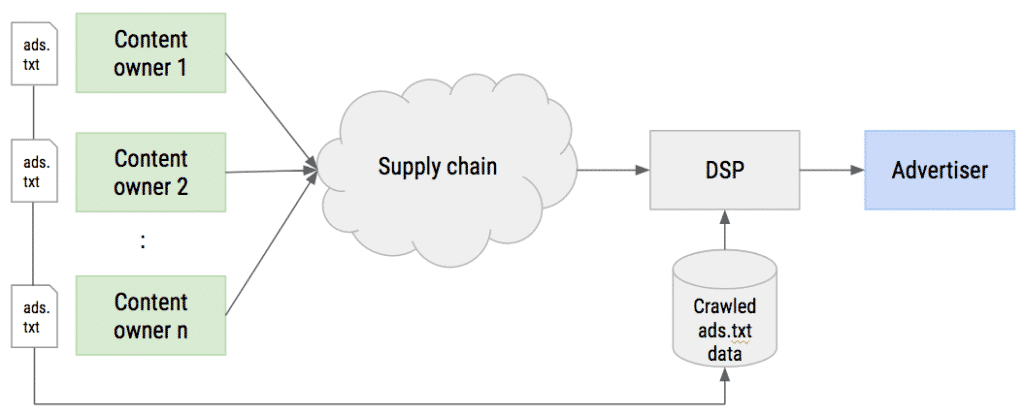Ads.txt – What Is It And How Does It Work?
Over the past few months, the IAB’s Ads.txt program has taken centre stage in the ongoing conversation around increased transparency in digital advertising.
In fact, the Ads.txt program has gained so much traction that DSPs such as DBM have stated that if an SSP is not listed on a publisher’s Ads.txt file in bid requests, then they will not bid.
This ultimately means reduced revenue for publishers, and means that all members of the digital advertising supply chain should be looking to implement Ads.txt policies moving forward.
Despite these good intentions, lots of people have been left scratching their heads over what this project actually entails. To help, we’ve broken down just exactly what Ads.txt is, how it works and who it benefits.
What is Ads.txt?
It stands for Authorized Digital Sellers and allows publishers to add a text file to their servers, which are then integrated into programmatic platforms. This method helps publishers clearly communicate who is authorized to sell their inventory, adding additional layers of transparency for programmatic buyers.
What is the benefit of the Ads.txt program?
It has been introduced into the OpenRTB spec to enable DSPs to check whether or not the supply source they’re directly integrated into is authorised to sell inventory on behalf of the publisher that the supply has originated from.
Because the text file can only be posted by a publisher’s webmaster, partners within the ecosystem can be sure of the validity of inventory prior to purchase.
How does Ads.txt work?
Ads.txt creates a public record, making it possible for programmatic buyers to purchase inventory only from these pre-authorized sellers. Demand Side Platforms can then deploy web crawlers to collect all the ads.txt files available.
When the DSP receives a bid request from a supply source, they can then check whether or not there is corresponding entry in the ads.txt file for the publisher or supply source combination – and adjust their bidding accordingly.
Utilizing the IAB’s description of the process, “Example.com publishes ads.txt on their web server listing three exchanges as authorized to sell their inventory, including Example.com’s seller account IDs within each of those exchanges.”

(Image source: IAB)
How does Unruly do it?
Unruly has two kinds of programmatic demand integration – directly integrated DSPs and third party exchanges. Our directly integrated DSPs can utilise Unruly’s entry in the publisher’s ads.txt, while DSPs buying UnrulyX inventory via a third-party exchange should look to the publisher’s ads.txt for the exchange they are integrated into.
Unruly are supporters of the IAB initiative ads.txt, also known as Authorised Digital Sellers. Where there is evidence of an ads.txt file, Unruly requires that only publisher inventory from authorised sellers is purchased. In the event that an ads.txt file is not present, Unruly will not exclude that publisher from targeting, but they will suggest that all publishers adopt ads.txt at the earliest opportunity.
Additional resources
If you’re still looking for information, you can read more from the IAB here:
Looking to add Unruly to your Ads.txt?
